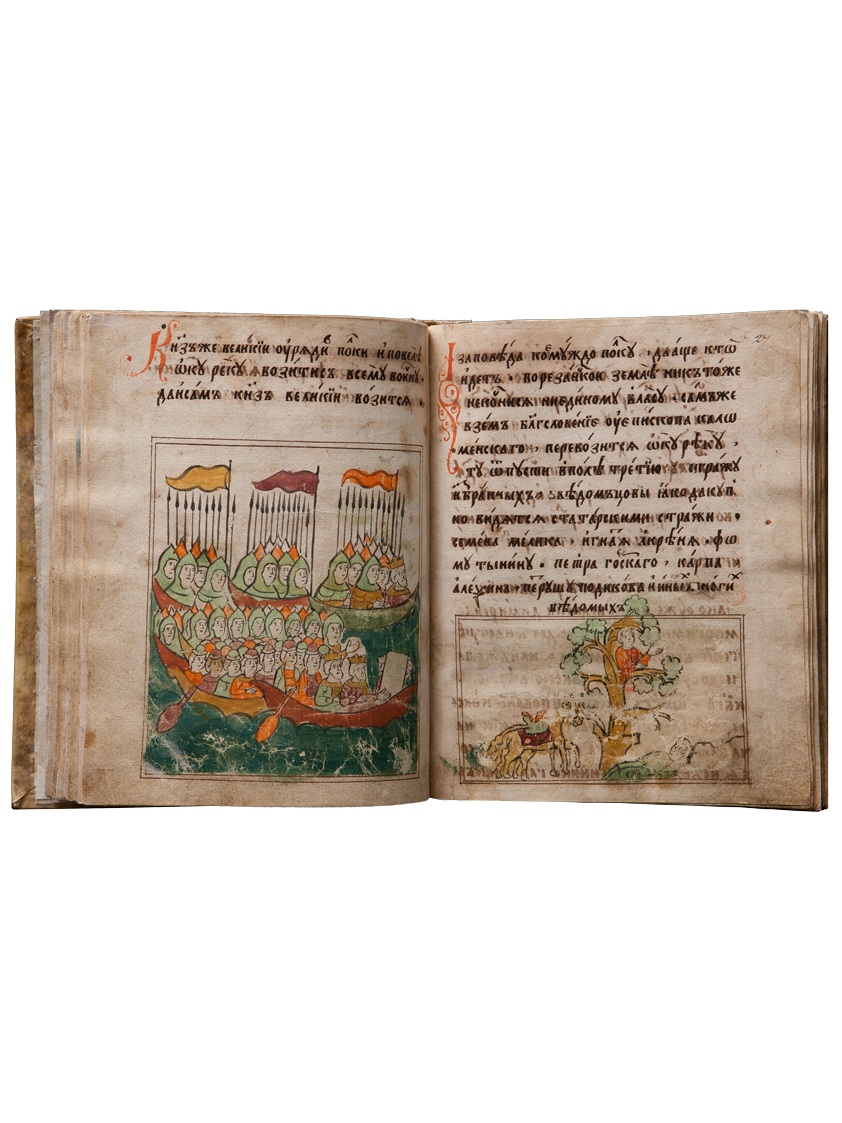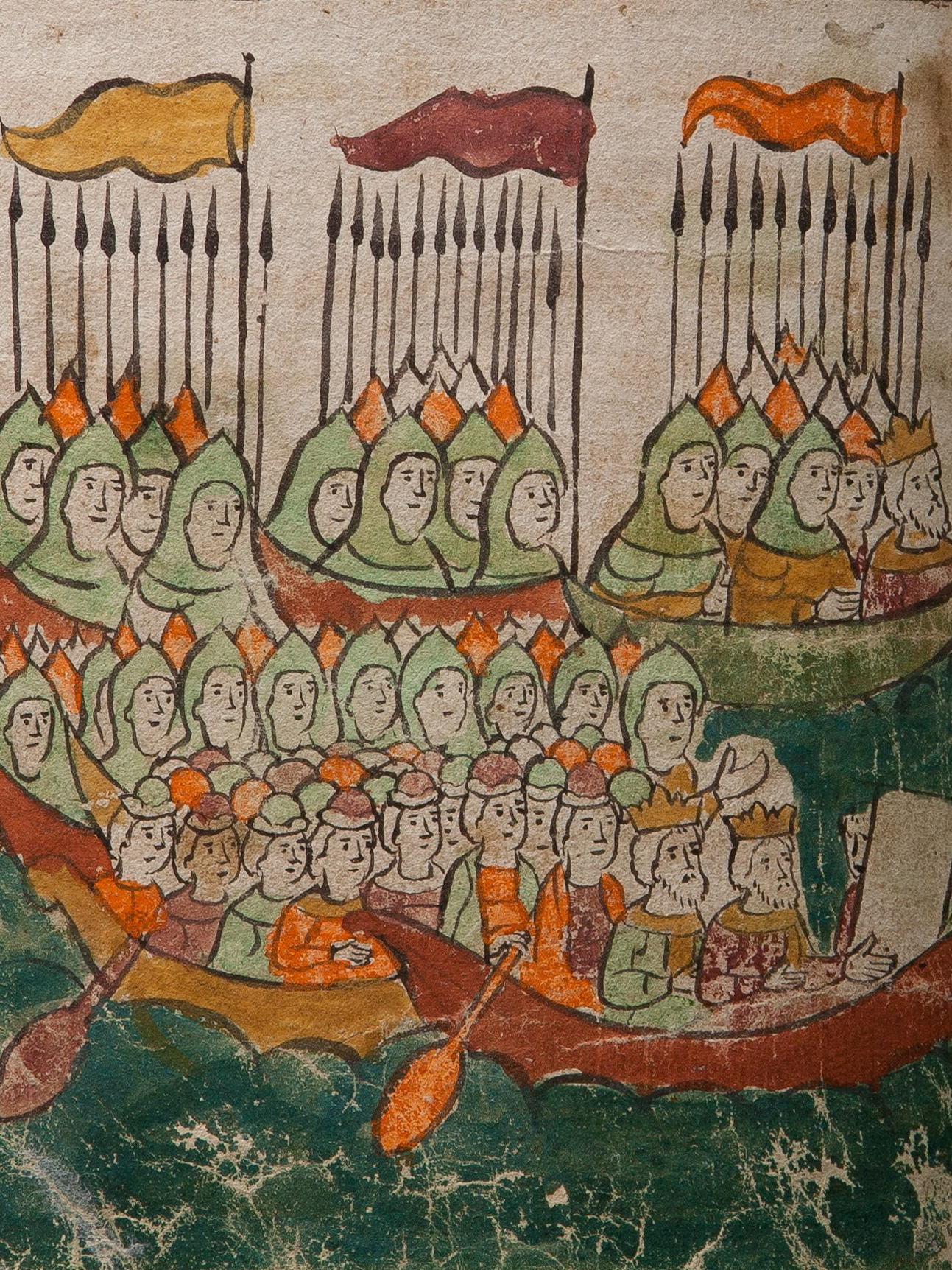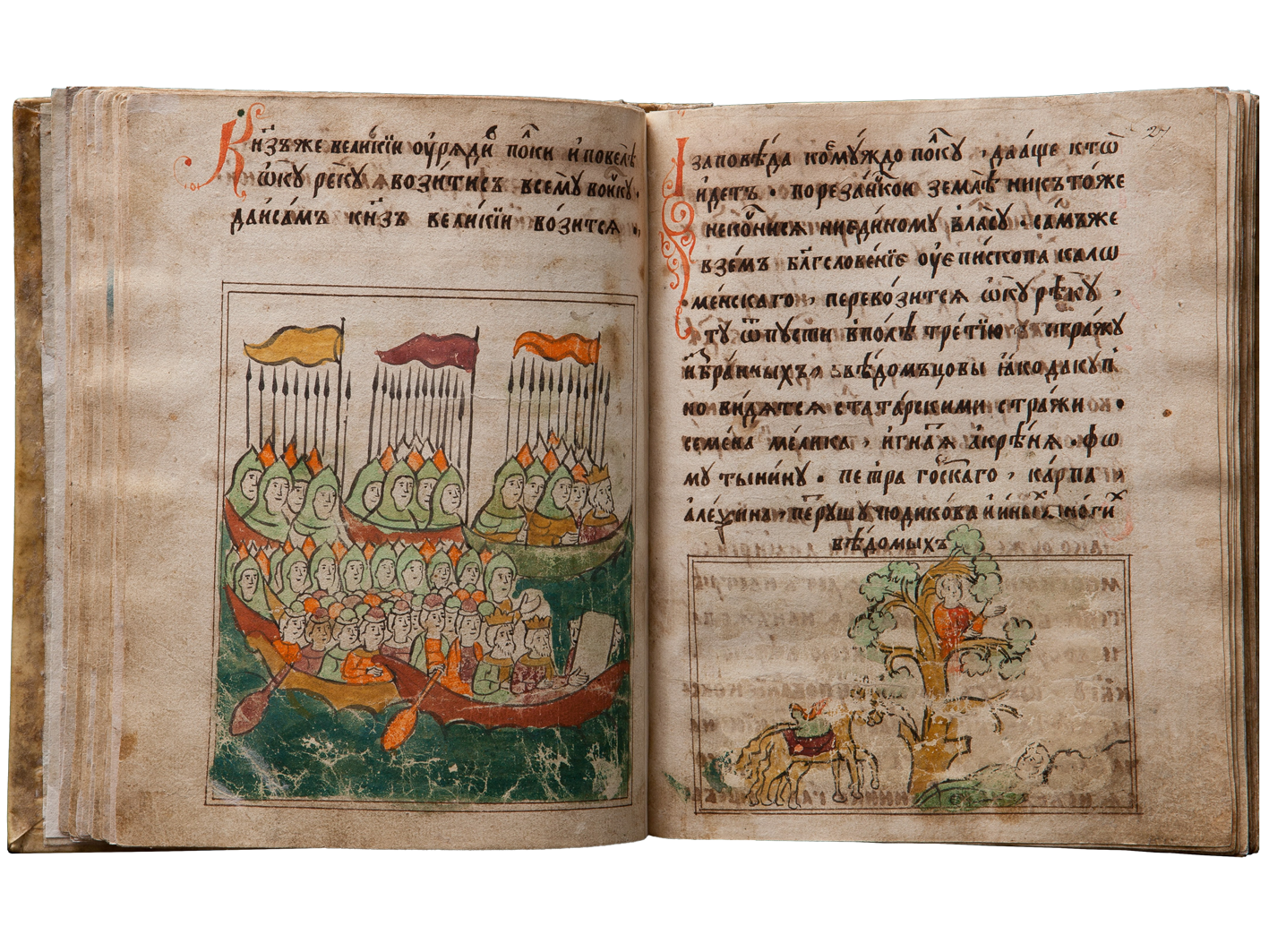Tale of Mamay's Battle



Of all works of the Kulikovo cycle, it is the most detailed and fascinating story about the battle of September 8, 1380, that remained in numerous copies. According to some researchers, “The Tale ...” was written in the first quarter of the 15th century, when the events of 1380 were still fresh in memory and the author could use oral stories and legends about the Kulikov victory.
The “Tale ...” describes in detail the preparations to the military expedition, the exit of troops from Moscow and their movement to the Kulikovo Field, the crossing of the Russians of the river Don and other events. Only due to this manuscript the key episode of the battle - the battle of the ambush regiment, which was led by Prince Vladimir Andreevich Serpukhov, is known.
Miniatures: "The Russian army crossing the Oka river" (left);
"The grand duke's spies watching for the enemy" (right).
On September 8 in 1380, Moscow Prince Dmitry Donskoy had a brilliant victory in the battle of Kulikovo field. This event, one of the most important in the history of Russia, was reflected in a number of literary monuments that were created at different times and over the centuries were copied and processed by Old Russian scribes. These works, both literary and historical, united by a common theme, are named by scholars the Kulikovo cycle. It includes two different in the way of narrating chronicles “Tale of the Kulikovo Battle” - a brief and lengthy, famous “Zadonshchina”, written alike “The Tale of Igor's Campaign” and “The Tale of Mamay Battle” - the most detailed and fascinating story about the victory of the Russian army over Temnik Mamai.
The popularity of “the Tale” among old Russian readers is evidenced by the fact that it has reached our time in numerous copies, eight editions, which in their turn are divided into many variants. The earliest edition is dated the second quarter of the XVI century, but according to some researchers, “The Tale...” was written in the first quarter of the XV century, when the events of 1380 were still fresh in memory and the author could use oral stories and legends about the Kulikovo victory.
“The Tale of Mamaiev’s Battle” provides all sorts of details on preparations for the battle, the battle itself and the results of the battle between the Russians and the Mongols. Many of these details reflect actual historical facts not recorded by other sources. So, for example, only from “The Tale...” we learn about the key episode of the battle - the battle of the ambush regiment, which was led by Prince Vladimir Andreyevich Serpukhovskoy, only the “Tale ...” contains detailed information on how the regiment was placed before and during the battle.
The collection of the Historical Museum contains four illustrated chronicles of the “Tale of the Mamai Battle” of the 16th – early 18th century, decorated with miniatures that make up the “picturesque” narration of the battle with Mamai over the river Don. Consistently and in detail, miniatures, understandable to contemporaries even without text, illustrate the most important events of the Battle of Kulikovo.
Miniatures: "The Russian army crossing the Oka river" (left);
"The grand duke's spies watching for the enemy" (right).


